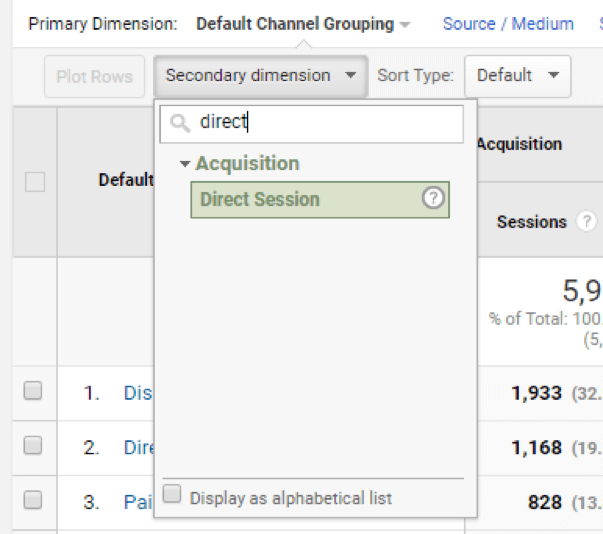Making Best Use Of SEO with Secondary Dimension in Google Analytics
Making Best Use Of SEO with Secondary Dimension in Google Analytics
Blog Article
Enhance Your Information Evaluation Using Secondary Measurement in Google Analytics
Exploring the abilities of secondary dimensions in Google Analytics opens a realm of possibilities for refining data analysis. By layering added measurements onto key data sets, an even more detailed story emerges, dropping light on user interactions and efficiency indications.
Comprehending Secondary Dimensions
In the world of information analysis, a crucial element to grasp is the idea of additional dimensions and their importance in removing deeper insights from Google Analytics reports. Secondary dimensions in Google Analytics describe additional criteria that can be added to the primary dimension, enabling for a much more in-depth analysis of information. By incorporating additional measurements, analysts can section and filter information to discover patterns, fads, and correlations that could not appear when taking a look at the information as a whole. These additional measurements can offer context and a much more detailed understanding of individual actions, traffic sources, and other essential metrics tracked by Google Analytics.

Benefits of Making Use Of Secondary Measurements
When analyzing information in Google Analytics, the usage of second measurements uses important insights into customer actions and efficiency metrics. By including an additional dimension to your key information, you can dive deeper right into the features of your web site visitors and their interactions. One of the crucial advantages of using secondary measurements is the capability to segment and contrast data a lot more efficiently. This division allows you to recognize just how various variables, such as demographics or traffic resources, impact customer habits and conversions (Secondary Dimension in Google Analytics).
Furthermore, secondary measurements aid in recognizing patterns and correlations that may not be immediately evident when checking out the information in seclusion. This much deeper degree of evaluation can discover valuable info that can direct advertising and marketing approaches, web site optimization, and total company choices. Additionally, secondary dimensions boost the context of your key information, supplying a much more thorough view of individual engagement and efficiency metrics. On the whole, making use of secondary dimensions in Google Analytics can significantly improve the depth and quality of your data analysis, leading to even more enlightened decision-making and improved end results.
Just How to Include Second Dimensions
By incorporating secondary measurements in Google Analytics, users can obtain much deeper understandings into their information evaluation process, permitting for even more thorough analysis of customer habits and efficiency metrics. Including additional dimensions is a visit the website straightforward process that can substantially boost the depth of analysis. As soon as in the record, situate the "Secondary measurement" tab over the data table.
Analyzing Information With Second Dimensions
Using secondary dimensions in data analysis provides an extra extensive understanding of customer habits and efficiency metrics. By including a secondary dimension to your main information set in Google Analytics, you can dig deeper right into the characteristics of your internet site site visitors and their communications. As an example, combining the key dimension of 'source/medium' with the second dimension of 'landing web page' can expose which particular pages are drawing in website traffic from various sources, assisting you optimize these web pages for far better engagement.

In significance, evaluating data with secondary dimensions encourages you to get beneficial insights into customer behavior, recognize patterns, and make notified choices to boost the performance of your electronic buildings.
Ideal Practices for Second Dimensions
In information evaluation, including secondary measurements successfully can considerably boost the deepness of insights acquired from metrics and customer behavior patterns. When utilizing second measurements in Google official statement Analytics or any other logical device, it is vital to follow finest methods to guarantee the precision and significance of the data evaluation.
One trick ideal technique is to thoroughly pick secondary measurements that complement the primary measurement being examined. Picking secondary dimensions that give additional context or additional segmentation can use an extra comprehensive understanding of the data. It is also important to stay clear of overcomplicating the evaluation by consisting of too several second dimensions, which might bring about complication or dilution of insights.
Moreover, it is a good idea to trying out various mixes of secondary and main dimensions to reveal new correlations and fads. Frequently evaluating and refining the choice of secondary dimensions based upon the particular objectives of the evaluation can cause even more actionable understandings. By adhering to these ideal practices, data analysts can utilize additional measurements properly to improve the overall data analysis process and decision-making capacities.

Verdict
To conclude, including additional dimensions in Google Analytics is essential for a detailed information evaluation technique. By leveraging additional measurements along with key ones, online marketers and analysts can reveal valuable understandings and connections that can inform decision-making and optimize digital advertising techniques. Recognizing just how to successfully utilize additional dimensions and following best practices will allow experts see page to draw out significant data and improve their overall performance metrics.
Additional dimensions in Google Analytics refer to extra criteria that can be included to the key dimension, enabling for a more comprehensive evaluation of information. By incorporating additional dimensions, experts can sector and filter data to reveal patterns, patterns, and correlations that could not be apparent when looking at the data as a whole. Incorporating the main measurement of 'source/medium' with the secondary measurement of 'landing web page' can disclose which specific web pages are bring in website traffic from various sources, assisting you optimize these pages for much better engagement.
One trick best method is to very carefully select secondary dimensions that enhance the primary dimension being examined. By adhering to these ideal practices, information analysts can utilize additional dimensions efficiently to enhance the total information analysis process and decision-making abilities.
Report this page